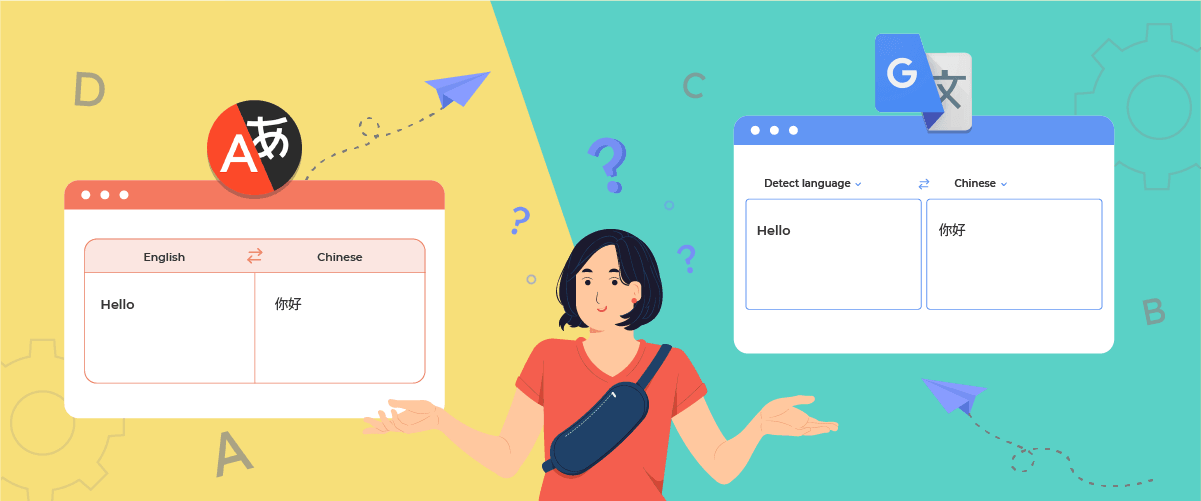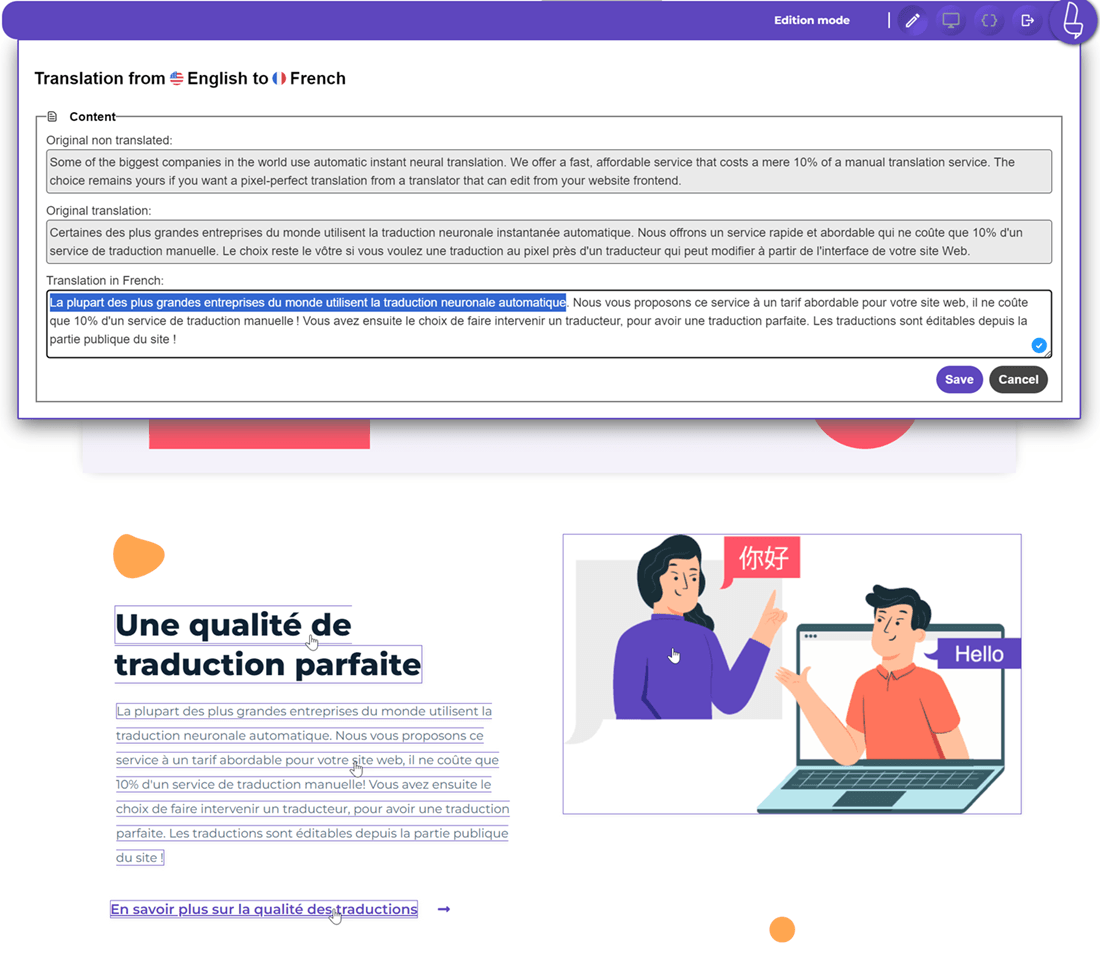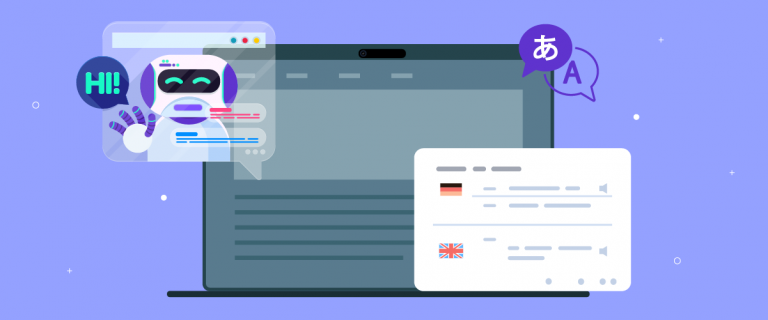If you want your website to be easily understood by everyone worldwide, you’re probably thinking about using Yandex Translate or Google Translate. These are two famous brands in translation, and they both have their own unique features and languages they can translate into to help people understand each other. But you might wonder, which is the best choice for you? This article will look closely at what Yandex Translate and Google Translate offer. We’ll talk about how many languages they can handle, how accurate their translations are, what they’d like to use, if they can work with other tools and programs, how much they cost, and more. Stay with us to find out which website translation tool fits your website perfectly.
Comparing Yandex Translate and Google Translate: An Overview
Regarding machine translation, Yandex Translate and Google Translate are two leading brand. Both tools utilize machine translation systems, which rely on algorithms to analyze and translate text between languages. These tools have revolutionized translation, making it fast, accessible, and convenient. While Yandex Translate was developed by the Russian company Yandex, Google Translate is offered by tech giant Google. Let’s look closer at both these translation tools’ features, language support, and translation accuracy.
Understanding Yandex Translate

Yandex Translate, developed by the Russian company Yandex, is a machine translation system designed to provide accurate translations for various languages. It is available as a browser interface, app, and virtual keyboard, making it accessible across different platforms. Yandex Translate supports an extensive range of languages, including European languages, making it a go-to option for foreign language translation. The translation engine of Yandex Translate uses the original text and source language to provide accurate translations. This ensures that the translated text captures the essence and meaning of the original language, giving users reliable results. With Yandex Translate, individuals can easily translate foreign texts, websites, and documents, ensuring effective communication in multiple languages.
Understanding Google Translate

Google Translate, developed by Google, is a widely used language translator that offers machine translations for a wide range of languages. It is the default translation tool on many platforms, including iOS, Android, and email services. Google Translate utilizes advanced Artificial Intelligence (AI) technologies and an extensive research database to provide accurate and reliable translations. With Google Translate, users can easily translate text, websites, and images in real-time. The translation engine of Google Translate continuously improves over time, thanks to its machine learning algorithms. This ensures that users experience consistent and accurate translations, making it a popular choice for language translation needs.
Supported Languages on Both Platforms

Language Support in Yandex Translate
Yandex Translate is renowned for its extensive language support. It covers over 100 languages, including most spoken languages like English, Spanish, and French, as well as less commonly spoken languages such as Latvian, Macedonian, and Belarusian. This makes Yandex Translate an ideal choice for individuals and businesses looking to translate text in various languages. Moreover, Yandex Translate supports European languages, including Russian, giving it an advantage in translating texts from and into these languages. Whether you need to translate important documents or websites or communicate with individuals from different language backgrounds, Yandex Translate offers the language support you need.
Language Support in Google Translate
Analysis of Translation Accuracy

Quality of Translations from Yandex
Yandex Translate is known for delivering high-quality translations, especially for supported Russian, English, and European languages. Yandex Translate’s translation engine considers the original text and source language, providing accurate translations that capture the meaning and tone of the original language. This ensures that individuals can effectively communicate in foreign languages, whether it’s translating documents and emails or simply understanding foreign content. Yandex Translate continuously improves its translation quality through machine learning algorithms and language data analysis, resulting in reliable translations that meet the needs of its diverse user base.
Quality of Translations from Google
Renowned for its high-quality translations, Google Translate caters to diverse language needs. The translation accuracy extends to languages like Arabic, Hebrew, and Greek, ensuring reliable output. Users experience consistent and accurate translations when utilizing Google Translate. The machine translation system constantly refines the translation quality, offering trustworthy and precise language translations. The quality and consistency of translations from Google Translate make it a preferred choice for language-related tasks.
Ease of setup

Yandex setup
Although Yandex Translate offers various capabilities, it requires a technical setup for integration into websites or applications. This setup involves utilizing the provided API (Application Programming Interface), which demands knowledge of programming concepts and expertise to implement the translation features effectively. Here are the points in terms of ease of setup.
- Setup Process: Yandex Translate’s setup involves accessing its API for developers who wish to integrate translation capabilities into their websites or applications. This process requires some technical knowledge, as developers need to register for an API key, understand the API documentation, and implement the code accordingly.
- Integration Flexibility: Yandex provides a detailed documentation guide that offers flexibility in integration, catering to various developer needs. This includes options for translating text, web pages, and working with different programming languages.
- User Accessibility: For non-developers, the setup might require additional steps or assistance from a technical person, making it slightly less accessible to those with limited coding experience.
Google setup
Google Translate simplifies the integration process for website translation through its user-friendly widget, which can be seamlessly integrated with just a snippet of code pasted into a site’s HTML. This approach minimizes the need for extensive coding, making instant translation features readily available to website owners. and here are the detail points:
- Setup Process: Google Translate offers a widget that can be easily integrated into websites with minimal technical effort. Website owners can add the Google Translate widget by copying and pasting a snippet of code directly into their site’s HTML, offering instant translation functionality without extensive coding.
- Integration Versatility: Beyond the widget, Google Translate also provides an API for more customized integration, similar to Yandex. This requires more technical knowledge but allows for greater control over translation features and user experience.
- User Accessibility: The presence of the widget makes Google Translate highly accessible to users without deep technical knowledge, enabling a broader range of website owners to implement translation services quickly and easily.
“Which best? Google Translate is more user-friendly and offers a quick setup for basic website translation functionalities. Yandex Translate provides integration options through its API, which requires some technical understanding, but both options offer comparable capabilities through their respective APIs. For developers looking for more in-depth integration and customization options, both Yandex and Google can meet their requirements.”
Which Offers More Value: Pricing Comparison

Pricing Structure of Yandex Translate
With Yandex Translate, users benefit from a transparent pricing structure, paying only for the characters they translate. This flexible model caters to the translation needs of both personal and business users, offering budget-friendly solutions that minimize costs.
- Pricing Model: Yandex Translate employs a pay-per-character model for its API services, allowing users to pay only for what they use. This model is particularly advantageous for users with variable translation needs or those looking to translate smaller volumes of text.
- Cost-Effectiveness: The transparent and flexible pricing ensures that personal and business users can manage their translation expenses efficiently, making it a budget-friendly option. Yandex Translate is designed for affordability, providing a cost-effective solution for users requiring accurate translations without a hefty price tag.
Pricing Structure of Google Translate
Google Translate offer more features for free than Yandex Translate. The pricing structure for paid plans varies, with considerations like the number of characters, original language, and additional features.
- Free Tier: Google Translate offers a substantial amount of text translation for free each month, catering to users who need translation services for casual or light business use without any cost.
- Paid Services: For heavier usage, Google implements a tiered pricing model based on the volume of text translated. This model supports scalability, allowing businesses and users with extensive translation needs to access services according to their specific demands.
- Integration and Features: Beyond the basic text translation, Google Translate’s integration with other Google services and its extensive range of features, including document and website translation, provide added value, making it a comprehensive solution for users seeking depth and breadth in translation services.
“Which best? for users prioritizing cost control and efficiency for occasional translations, Yandex Translate might be the more value-oriented choice. However, for those seeking a more feature-rich platform with the flexibility to handle varying volumes of translation work, Google Translate could offer greater value through its comprehensive services and integration capabilities.”
Analyzing Website Translation Integrations

Integration Options with Yandex Translate
Yandex Translate provides a range of integration options to facilitate seamless website translation. Businesses can leverage API integration to automate translation processes. The virtual keyboard integration simplifies text input in foreign languages, while the browser interface integration allows direct web page translation. Yandex offers real-life translation tools that enable users to translate text in real-time, enhancing the original language experience. These integration options ensure a smooth and efficient translation process, making Yandex a reliable and versatile tool.
Integration Options with Google Translate
Regarding integration tools, Google Translate has a clear advantage over Yandex Translate. Google’s machine translation system supports multiple languages, ensuring accurate and reliable translations. Its integration with email, browser, and app interfaces makes it incredibly user-friendly, and its default language settings guarantee seamless translations across platforms. In addition to these features, Google Translate offers a robust API Translation tool allowing developers to integrate translation capabilities into their own applications. And the best part? The free version of Google Translate provides all of these language translation tools at no cost.
“Which best? Google’s extensive range of language integration tools, including support for multiple languages and seamless integration with email, browsers, and apps, makes it incredibly user-friendly and versatile. The platform’s robust API Translation tool further enhances its appeal by allowing developers to incorporate translation capabilities directly into their applications.”
Conclusion: Yandex Translate vs Google Translate
When considering Yandex Translate vs Google Translate, it’s essential to note that both have their strengths and weaknesses. To help you make an informed decision, we have elaborated on the key features of each service below:
Yandex Translate:
- Offers translations in more languages, providing a broader reach in real-life scenarios.
- Has a user-friendly interface and offers voice input for better accuracy.
- Offers translations for images, which can be useful for translating signs or menus.
- Allows users to save frequently used translations in a personal dictionary.
Google Translate:
- Excels in accuracy and natural-sounding translations, making it ideal for conveying original language nuances.
- Offers features like handwriting recognition and real-time conversation translation, enhancing its usability.
- Has a more extensive database of phrases and idioms, making it better for translating complex texts.
- Has a feature that allows users to take a photo of text and receive an instant translation.
Ultimately, the choice between Yandex Translate and Google Translate depends on individual needs and preferences. We encourage users to explore both and determine which best aligns with their requirements.
Here, we also summarize the comparison table between Yandex and Google Translate based on several aspects discussed above.
Aspects | Yandex Translate | Google Translate |
Developer | Developed by Yandex, a Russian company. | Developed by Google, a global tech giant. |
Language Support | Covers over 100 languages, including many lesser-known ones and strong support for Russian and European languages. | Covers over 100 languages with strong support for global languages, including Asian and Middle Eastern languages. |
Translation Accuracy | Excellent for Russian, Turkish, and other Eastern European languages, with accurate context-based translations. | High accuracy across a broad range of languages, especially widely spoken ones like English, Spanish, and Mandarin. |
Ease of Setup | Requires API integration with technical expertise; detailed documentation provided. | Offers an easy-to-implement widget and API integration; suitable for non-technical users. |
Pricing | Pay-per-character model, cost-effective for smaller-scale translations. | Free for light use; tiered pricing for higher volumes with additional features. |
Integration | Supports API, browser, app, and virtual keyboard integrations for flexible usage. | Seamless integration with Google services (email, browser) along with robust API and real-time translation. |
Unique Features | Includes a personal dictionary and supports image translations. | Provides handwriting recognition, voice translation, and comprehensive real-time translation tools. |
How about Linguise? AI translation service for your website
Linguise is an AI automatic translation service that using AI Machine Translation technology, to translate text from one language to another. By utilizing the advanced capabilities of Google’s Cloud AI, Linguise ensures high-quality website translations, achieving high accuracy.
One of the standout features of Linguise is its cache server, which significantly speeds up the translation process. Once a translation is generated or requires an update, Linguise first checks if an instant cached version is available, potentially reducing loading times by up to 80%. These cached pages are HTML-only yet retain all the dynamic functionalities of the site’s original language version.
A front-end live editor for on-the-spot adjustments.
Beyond automatic translation, Linguise includes a front-end live editing tool that enables direct modification of translation outcomes on the website’s front page. This convenient functionality is easily accessible through the Linguise dashboard.





